History of Imbolc and an Imbolc Ritual
Last Updated on January 11, 2020 by Coven of the Goddess
Imbolc is third of the Sabbats celebrated in the Wheel of the Year. Celebrated on the 1st or 2nd of February, this day marks astrologically the day directly between Yule, the Winter Solstice, and Ostara, the Spring Equinox. February is a harsh and bitter month. In old Scotland, the month fell in the middle of the period known the Wolf-month; it was also known as the Dead-month. This is the time of year when the season is still cold and dreary, but there are small but sturdy signs of new life beginning to appear: In days of old, new Lambs were born, and the soft rains brought new grass. Ravens begin to build their nests, and larks were said to sing with a clearer voice.
In the Irish Gaelic, it’s called Oimelc, which translates to “ewe’s milk. The term Imbolc means “in the belly.” Not only does this refer to the new life of spring, but it also clearly refers to the pregnancy of the Earth Mother with life as yet unseen. In celebrating Imbolc, we acknowledge the return of spring, and we also know that with each passing day, the sun becomes stronger as light overcomes darkness, and the circle that is never-ending, the Great Wheel, turns ever slowly toward the light half of the year. As believers in Goddess, we also acknowledge the passing of the time of the Crone and welcome the return of youthful Maiden.
Imbolc is one of the Celtic Fire Festivals, and the Goddess associated with Imbolc is Brigid, (also known as Brighid, Bríde, Brigit, Brìd). She is the Goddess of poetry, healing, and smithcraft. As both goddess and saint, she is also associated with holy wells, sacred flames, and healing. The lighting of candles and fires represents the return of warmth and the increasing power of the Sun over the coming months. Later this became known as St. Brigit’s day, and though there are many churches that bear her name, she was removed as a saint in the 1960’s.
Other cultures also celebrated this day. In Ancient Israel and Judah, the Goddess Ashram was once celebrated on February 2nd. This festival continues to this day as the Festival of Trees. The Romans celebrated Lupercalia honoring the creation of Rome by Romulus and Remus. The ancients Egyptians celebrated the Feast of Nut. Christian/Catholic celebration, known as Candlemas, celebrated the 40th day after the birth of Christ. It is known as the Feast of Purification of the Virgin. By Jewish law, it took a woman forty days after birth to be cleansed.
In Northern America, the First Nations also had festivities on this day or around the week Mid Winter falls. The Navajo Sing Festival is a celebration of the Goddess Changing Woman. The Iroquois Nation, which consists of the Oneida, Mohawk, Seneca, Cayuga, Onondaga, and the Tuscarora tribes, have the Mid Winter Ceremony, which consist of many mini celebrations, that bring in the new beginnings of spring, and recognize the importance of dreams. The Dream Ceremony is one of the most important parts of this Celebration. The Iroquois believed that if a person lost their dream, they lost their soul. During the Dream Ceremony, people would tell their dreams to the elders, and they would be interpreted. A charade game was also played where people tried to act out their dreams, and other people would guess what the dream was.
Our ancestors also brought traditions over to America. In Non-Gaelic Celtic celebrations, it was said that a serpent would come from its hole on the day of Bride, though there may be three feet of snow. The traces of this festival can be traced to modern America in the Groundhog Day custom on February 2. If the groundhog sees his shadow on this morning, it means there will be six more weeks of winter.
This day throughout history marks a glimpse of hope to the coming of spring and warmth of winter. It is a time to plant the seeds of the hopes and dreams we have for the upcoming year and a time to renew and rejuvenate dreams thought lost.
A Different View Point on Imbolc and its History
“Come with me”, said Brigid, “I am going to put my mantle around the Earth because it has dreamed of beauty.”
This season belongs to Brigid, the Celtic goddess who, in later times became revered as a Christian saint. Originally, her festival on February 1 was known as Imbolc or Oimelc, two names which refer to the lactation of the ewes, the flow of milk that heralds the return of the life-giving forces of spring. Later, the Catholic Church replaced this festival with Candlemas Day on February 2, which is dedicated to the Virgin Mary and features candlelight processions. The powerful figure of Brigid the Light-Bringer over lights both pagan and Christian celebrations. As with many of the Pagan Sabbats, Imbolc has made its way into the lives of non-pagans. The foretelling and omen properties of the holiday gradually evolved into Groundhog Day, the day when the end of winter is foretold by the appearance (or non-appearance) of the groundhog. In most parts of the British Isles, February is a harsh and bitter month. In old Scotland, the month fell in the middle of the period known as Faoilleach, the Wolf-month; it was also known as a’ marbh mhiňs, the Dead-month. But although this season was so cold and drear, small but sturdy signs of new life began to appear: Lambs were born, and soft rain brought new grass. Ravens begin to build their nests, and larks were said to sing with a clearer voice.
In Ireland, the land was prepared to receive the new seed with spade and plow; calves were born, and fishermen looked eagerly for the end of winter storms and rough seas to launch their boats again. In Scotland, the Old Woman of winter, the Cailleach, is reborn as Bride, Young Maiden of Spring, fragile yet growing stronger each day as the sun rekindles its fire, turning scarcity into abundance. In some traditions, Cailleach is said to have imprisoned Bride. The return of the Spring being the result of her release.
The exalted one… woman of wisdom… a goddess whom poets adored…” — Cormac’s Glossary
It is tempting to view this goddess of the early Spring only as The Coming of Bride: a wide-eyed, golden-haired girl, encircled by children. But behind her girlish innocence is the power of a once-great ancestral deity, Brigid, whose name means “The Exalted One,” queen and mother goddess of many European tribes.
She is said to have had two sisters: Brigid the Physician and Brigid the Smith, but it is generally thought that all three were aspects of the one goddess of poetry, healing, and smithcraft. Elsewhere she is described as the patron of other vital crafts of early Celtic society: dying, weaving, and brewing. A goddess of regeneration and abundance, she was greatly beloved as a provider of plenty who brought forth the bounties of the natural world for the good of the people. She is closely connected with livestock and domesticated animals.
Some Irish rivers bear her name, and in these regions, she is so beloved that she is said to have invented beer!!!
Appropriate rituals for this holiday include celebrations of the Sun or Brigid and the light and inspiration they provide, as well as initiation and Goddess dedication rituals. This is an ideal time to divine your future through tarot, runes, or trance. You may also draw upon the growing strength of the Sun to provide inspiration for your growth. If you need to look into the future or past to aid in your path planning, this is the ideal holiday. This is a time to celebrate that the Earth will soon awaken from Her winter sleep!
Saint of the Flame – We are all her daughters
“…she shall arise like a shining sun…” — Lives of Saints, The Book of Lismore
In the past, a flame was lit and tended on a twenty-day rotation; each woman tended the fire in her own way so that it is a solitary devotion linked to the devotions of a larger group. On the twentieth day, the Goddess Herself keeps the flame alive. These women became known in some regions as “The Daughters of The Flame”.
This fire was burned in a place sheltered by hedges, and no men were allowed to enter therein. Even the women who tended it could not blow on it with their mouths, but had to use bellows or a fan.
Today, instead of burning in one grove, temple, or monastery, it burns on personal altars, desks, and picnic tables in countries east and west, south and north.
The reasons for rekindling Her flame are many. It is a celebration in our own lives of Her triple aspects of poet, healer, and smith. Tonight, we will light a fire in honor of the Goddess Brigid and the saint Bridget, modeled after the perpetual fire which once burned in Kildare. With the candles that we will each light, We share the task of tending the flame – our OWN flame.
In most traditions, the initial lighting of the Sacred Flame is done by a virgin or maiden.
How to Perform the Imbolc Ritual
(Begin drum circle and lighting of the flame – After the initial lighting, the maiden will light her candle from the flame. Each person then lights their candle from the person before them, until the Circle is complete.)
Make yourself comfortable. Close your eyes. Take a deep breath and allow yourself to relax into your seat. Take another deep breath to release all your tensions, all your cares. Finally, take one more deep breath to bring yourself into a place of stillness. Clear your mind and listen to the sound of my voice.
Bring your awareness to your skin. Feel how it gently holds you in, holds you up. Feel the pressure of where you are seated against it. Feel the temperature of the room. Sense the energy of your sisters around you. Inhale that feeling through your skin. Let your mind touch each part of you—the crown of your head and scalp, your back, the bottoms of your feet, the tops of your hands. Feel your beautiful skin surrounding you. Now you feel that there is warm sunlight on your skin, and a soft breeze blows. You have become a seed, hanging in a delicate balance in the arms of your mother. Gently, with reverence, you detach yourself from Her and float on the breeze until you find a soft place to land. There, you nestle into the dark folds of Her skin, the deep, moist soil of Earth, and rest. Your journey was difficult and long, and you feel comforted to rest in this place.
From your vantage point, you watch as the days grow longer, the skies darkening with winter weather and snow. The sun barely touches your skin anymore, and you feel sorrow at its passage. Soon, the first flakes begin to fall, and you burrow deeper into the earth to get away from the cold. A blanket of soil and moisture begins to cover you until you can no longer see the sun at all. Further and further, you push into the soil until it is completely dark and safe. It is warm here, and you again feel close to your Mother as she holds you in her belly. You rest, silent in the darkness.
(pause)
There is a sound, a motion in the Earth. The soil around you is trembling. And there is a change inside of you, too. Your skin feels too small. Your heart is filled to bursting with excitement. You want to stretch and break free of this shell you are in, to break free of the heavy, warm soil. You, too, begin to tremble with anticipation. You call to your Mother, “What comes, my mother, to shake the very breast of you?” “It is Spring, my child,” She whispers, only you can’t hear her, you feel her say it to you. “The sun grows in strength and caresses me. I am coming alive, and so are you.”
You know Her words to be true. Deep inside, you is a growing restlessness, an ache to break out and to grow. It is so strong, so passionate, that it nearly pulls you apart. But you are also afraid: if you disintegrate here in the bosom of the earth, what will be left of you? Who will you become? You know this fear because it has been with you before. It has been the shadow that followed you on the wind, the first icy gales of winter that haunted your dreams. It is time, time to face your fear and to see that it is only one possibility. Turn and name your fear. See it head-on. Know that it is only one path and that to risk success, you must risk failure. Go into fear.
(pause)
You have taken hold of your fear. You understand the danger that you face, that any risk is accompanied by the possibility of failure. And yet you also know that failure is only one of a thousand possibilities! Instead, you hold your fear close to you, compassionately, in understanding, and then you tuck it away. Today is not the day that you will fail.
Instead, as you lay in the Mother’s belly, preparing, feeling the pull of the sun, you allow yourself to dream. Who will you become? When you emerge from the earth, what will you leave behind? You will be new and whole and take the next brave step on your path. Where will it take you? You need not know the destination of your journey—you must only have the courage to take the next step. See your dream; see your new beginning. Breathe it in and allow it to possess you. Allow the passion to consume you until you are full to bursting.
(pause)
Finally, you can bear the passion no more! In a moment of pure magic, your skin falls away, and you begin to grow. This is no timid growth—you shoot out of the earth, gaining strength as you grow, fueled by your dreams, your passions, your new beginning. And as you grow, the soil around you cleanses you, washing away any residue of the old you, the seed you have now outgrown. Around you, there is energy from the earth, and it calls your name, helping you, giving you strength to push your way up to the surface. Until you break free, and the glorious midwinter sun shines down upon your tender shoots! The sun kisses your new, fresh skin, calls you tender names, caresses you. Beneath you, the Mother strokes your roots, anchoring your new self to Her soil, giving you strength, giving you nutrients to grow.
And there you stand, glorious in the spring sunshine. Fresh, new, fertile. And as the days lengthen, you grow strong and true. Your fear no longer holds you; you are fed by your dreams. And in this place of strength, you can bring forth new life, a shepherd. Your goals come to fruition like fruit and spawn new seeds, seeds which will take their place in the wheel of life. But for today, all you need to know is that you were once a seed, once you were only a dream on the wind. You put your trust in Goddess, took Her hand, took Her gifts, and took the next step to your goal. Your fear was still there, but you knew your fear and didn’t let it rule you. Instead, you held it tenderly and took the next step anyway, knowing that it was only one of a thousand possibilities. For today, you are growing, changing, giving birth to your dreams.
How will you grow this year, my sisters? What gift will you bring forth to the world?
(asperge each woman with saltwater)
Slowly, you begin to return to the room, to the sound of my voice. You take with you your fear and your dream, your intention for this year.
Now is the time for planting now is the time for nurturing seeds that they may grow strong within us. Come back to the room, hear my voice. Gently stretch, gently awaken, and when you are ready, open your eyes. Blessed be!

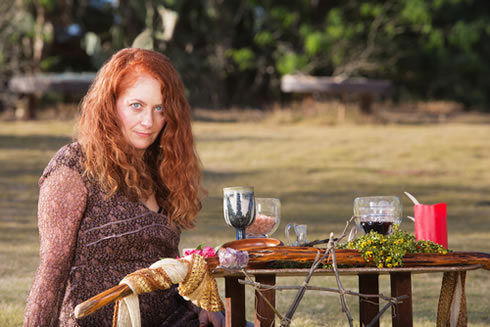

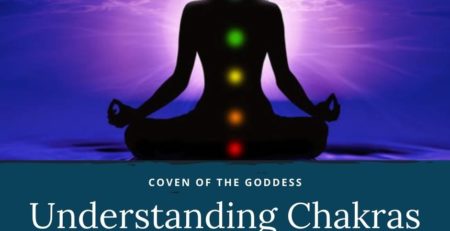
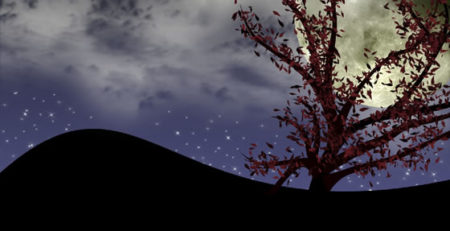

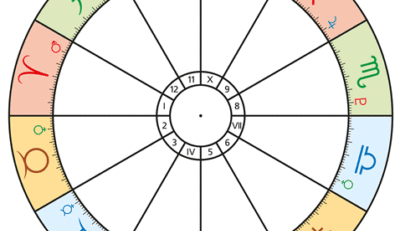
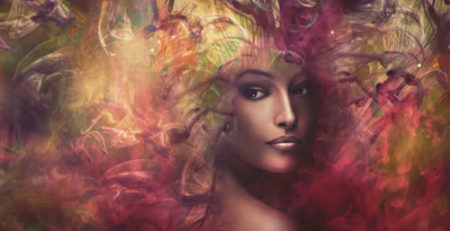
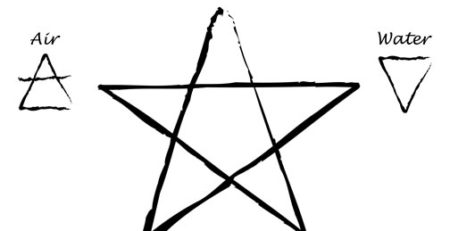

Leave a Reply